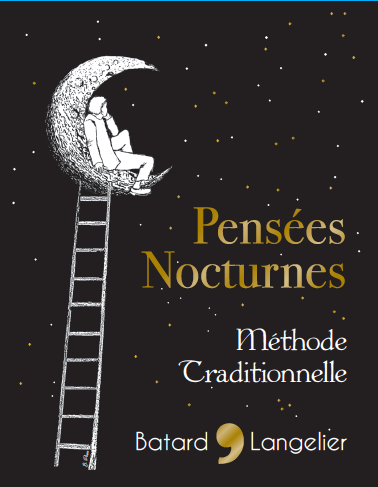
Vintage 2019 in progress…
Maison-sur-Sèvre
15 October, 2019
There is much to celebrate during this visit to Muscadet – the harvest has finished at the Batard Langelier estate!
The estate has regained a more serene rhythm, the vats are full and the alcoholic fermentation is finished.
The wines are on lees and continue their ageing with one batonage per week.


A look back at the past year’s general climate report for Muscadet Sèvre et Maine
The vintage was announced to be an early vintage. Indeed, the mild winter resulted in early budburst, but it was very quickly slowed down by the two frosts at the end of April and beginning of May.
The cold temperatures set in throughout May and early June, the vines were not developing, and everything was sloooow.
From mid-June, the heat arrived, albeit a little abruptly with a heat wave at the end of June.
For the vines, it was like the starting signal “Let’s GO”, and the vegetative development recommenced very quickly. This year there was a very large quantity of shoots, leaves and grapes – jungle Muscadet.
Two heat waves then followed at the end of July and end of August, creating new difficulties for the vines that were lacking water.

2019 Harvest Summary for Batard Langelier Estate
Located on top of the hillsides, Jérémie’s vineyards were late to start this year.
This worked to his favour, as the tardy timing actually minimized bud loss during both frost episodes.
Having the vineyard on the hillsides exposes the vines to the wind which prevents the stagnation of cold temperatures during frost episodes, and dries the foliage and fruit after rain.
Therefore, there was no loss during the spring on the Batard Langelier estate.
The 2019 vintage was productive and Jérémie had to do several green harvests to reduce yields and encourage concentrated grape production.
These green harvests were made on all the plots where the vines showed signs of weakness during the summer heat waves. Reducing the grape load allows the vine to better distribute the development energy over less fruit.
One plot newly planted in 2018 was particularly well monitored as the first years are important for the vine to effectively take root. It should not be exhausted too much, nor produce too much. For these 70 ares planted in the Cru Monnières St Fiacre appellation, pruning was short and the green harvest was drastic.
Harvest 2019 started on the 9th of September until the 18th.


Jérémie’s New Projects
Two Crus now complete the range of wines produced by Domaine Batard Langelier
0.50 ha in the Chateau Thébaud appellation.
The vines overlook a granitic cliff, the soils are not very deep. The Melon de Bourgogne often produces very elegant wines with finesse.
0.70 ha newly planted and then 1 ha20 planned for planting in the Monnières Sait Fiacre appellation.
We are here on the left bank of the Sèvre. The plot is at the top of a gently sloping hillside. The soils are sandy-silty and result from the degradation of the gneiss. The Melon de Bourgogne are usually more fleshy.
These vines are already certified organic and perfectly complement the existing terroirs where the vines planted on soils of gneiss, grabbro, granite and sand produce today 4 very different Muscadets.


70 ares planted in Cru Monnières Saint Fiacre on sandy-silty soil, medium-deep




Work in the Cellar
The vinifications are finished, and they have been a rather regular quantity for the Cellar.
The juices are promising with some tanks already showing a typical Melon notes with beautiful aromatic expression.
To start the fermentations in his tanks, Jérémie prepares pieds de cuve with 50 litres of wine that he takes from each tank and puts in his grandmother’s house where it is always warmer.
Fermentations are triggered spontaneously on these small volumes which they pour in each of the corresponding tanks a few days later. The yeast populations are then high enough to carry out the fermentation.

New wine cuvée to come : Bubbles !
Wonderful news, the bubbles are coming to Domaine Batard Langelier! Jérémie has a few vines of Folle Blanche, another local grape variety in the region that has been neglected because of its sensitivity to rot at the end of its maturity.
However, it is a very interesting grape variety for its acidity.
Jérémie has made it a base wine with a large proportion of Folle Blanche and a little Melon de Bourgogne. The wine is on fine lees to round off this acidity, before it starts its prise de mousse.
When tasted, the aromatic notes are very delicate on lime and hawthorn, the wine has a very zesty palate thanks to the natural acidity of the grape variety.
This develops a bubble of very good quality that we look forward to tasting in a few months.

Wines available at the Domaine
Polaris 2018 – young vines planted on deep metamorphic arena soils. Minimum seven months on lees.
Very fresh wine. In the mouth, a subtle combination of floral aromas and white fruits (peach, pear), and melon. Precise, simple and dry wine.
Didascalie 2017 – vines planted on soils rich in Gabbro. Minimum seven months on lees.
Very fresh acidity, the rather intense aromas blend citrus fruits (lemon, lime) and salty notes. Slightly bitter/briney on the palate with a very pleasant finish.
Metaphore 2018 – vines planted on gneiss soils in Clos St Vincent. Minimum seven monts on lees.
Supple mouth, the aromatic profile tends more towards very ripe yellow fruits (nectarine, peach) mouth that finishes well-balanced thanks to a hint of residual sugar.
Oxymore 2016 – Vines planted on shallow soils (10 -15 cm) on Gabbro mother rock. Aged 2 years on lees.
Rich, round mouth with a silky texture. Wine aged on fine lees for two years, allowing the development of toasted bread and hazelnut notes that are complemented by pear, jasmine, citrus fruits, and a pleasant salinity. Incredible length.
